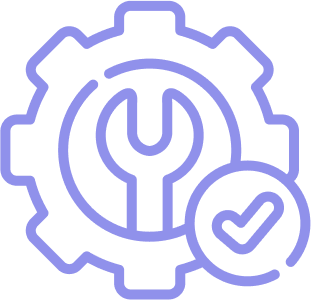Have you ever seen a big business like a school, hospital, or company and wondered how they manage so many things? Imagine trying to keep track of people, money, products, sales, reports, and messages all at the same time. It sounds tough, right? That’s where ERP software comes in.
ERP stands for Enterprise Resource Planning. Don’t worry we’ll explain everything in simple words.
ERP software is like a super-smart helper for businesses. It helps companies manage different parts of their work in one single system. Think of it like a big control room where everything is connected your team, your products, your sales, your money, and your services.
Instead of using many small apps for different tasks, ERP brings everything into one place. That means less confusion and more work done in less time.
Let’s say you run a toy shop. You need to manage:
Without ERP, you’d be using 5–6 different apps or papers to handle each of those. It’s easy to make mistakes that way.
With ERP, all this is done through one smart system everything talks to each other. For example, when you sell a toy, your stock gets updated, your money is recorded, and even your delivery is tracked. Easy!
Most ERP software has the following important modules (or sections):
Tracks how many items you have, what’s coming in, and what’s going out.
Handles customer orders, invoices, and delivery details.
Manages employees, salaries, attendance, leaves, and performance.
Keeps an eye on expenses, income, taxes, profits, and reports.
Helps you handle your customers, their messages, issues, and feedback.
Connects with suppliers and tracks how goods move from factory to customer.
Helps make and manage products, raw materials, machines, and timing.
These modules can be added or removed based on what the company needs.
ERP software is not a one-size-fits-all tool. Every business is different, so ERP must be designed to fit that business’s goals. Here’s how ERP software is usually built:
Before starting, developers talk to the business owners and workers. They ask questions like:
This helps them understand what features the ERP should have.
Once the goals are clear, the team creates a plan. This includes:
This is like drawing the blueprint before building a house.
The next step is to design how the ERP will look and work. A good design is simple, easy to use, and fits the company's workflow.
This includes menus, buttons, reports, and forms that make it easy for users to enter or check data.
Now the real work begins! The developers write the code that makes the ERP software run. They make sure each module works properly and connects with the others.
This is the most time-consuming step.
Before launching, the software is tested again and again. This is done to:
Testing helps make sure the software is safe, fast, and smooth to use.
Once the software is ready, the business team is trained on how to use it. Videos, guides, and one-on-one help are given.
Then the ERP system is officially launched in the company!
The job doesn't end after launch. ERP software needs regular updates and support. This keeps it safe from hacks, improves features, and fixes any new problems.
ERP software is not just smart — it’s powerful! Here are some great things it does for a business:
With all tools in one place, people don’t waste time switching between apps.
Since everything is automated and connected, errors like wrong billing or lost data are avoided.
Real-time data and reports help the owners take quick and better decisions.
Everyone sees the same data. So, departments work together more smoothly.
Faster service, correct billing, and quick delivery = happy customers!
ERP isn’t just for big companies. Many small and medium businesses (called SMBs) also use it today.
Here are some businesses that use ERP:
Creating ERP is a big job, so here are some simple tips:
ERP software is like the brain of a business. It helps connect everything and everyone in one system. Whether you’re running a small shop or a big factory, having ERP software saves time, money, and energy.
It may look complicated at first, but when explained step-by-step — like in this guide — even a 10-year-old can understand it.
If you’re planning to build your own ERP software, take time to plan it well, work with expert developers, and always think from the user’s point of view. With the right ERP system, your business will run faster, smoother, and smarter.
There are mainly three types of ERP software:

Installed on the company’s own computers. Good for companies that want full control.

Runs on the internet. You can use it from anywhere, like Gmail or YouTube.
A mix of both — some data is on company computers and some on the cloud.








Ready to elevate your online presence with a stunning Webflow website? Contact Vulture Concepts today to discuss your project. Let’s create something amazing together!